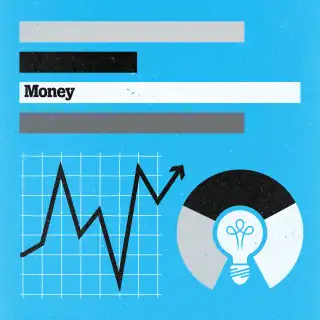The Best Way To Tap Your Retirement Accounts

Q: I recently retired and need to start taking withdrawals from my retirement accounts. I'll start with my taxable accounts, first focusing on money markets. Beyond that, what’s the best strategy?
A: Just as you aimed to save for retirement in the most tax-efficient way possible, you want to think strategically about tapping your funds to pay for it, says Jeff Feldman, a certified financial planner with Rochester Financial Services in Pittsford, NY.
You indicated you will start with your taxable accounts first. This is a common inclination, as this would allow money to keep growing in your 401(k)s and IRAs tax deferred.
But that's not always the best course of action, particularly if you don’t have other sources of income. “If you are just living off your taxable accounts, you may forfeit tax savings from exemptions or deductions” by not reporting sufficient income, he says.
For example, if your write offs add up to $23,000, you want to claim at least that much in income — even if it means withdrawing that amount from your retirement plans and reinvesting it in a taxable account or converting it to a Roth.
Remember, when you withdraw funds from a taxable account, only the gains count as income. “When you withdraw funds from a 401(k) or IRA, the entire amount is income,” says Feldman.
The Social Security Question
Are you receiving Social Security? In that case, you may want to take a slightly different strategy to minimize the rate at which your benefits are taxed.
Uncle Sam doesn’t require you to pay taxes on all of your Social Security income, but the extent of that break depends on your “provisional income,” which is your adjusted gross income, nontaxable interest, and half of your Social Security benefits.
If your provisional income is less than $25,000 for single filers and $32,000 for joint filers, you pay no tax on Social Security. If it falls between $25,000 and $34,000 for singles ($32,000 and $44,000 for couples), Social Security is taxed at up to 50%. If it’s above those limits, benefits are taxed at up to 85%.
In this case, if taking money from retirement accounts will bump you into a higher bracket, tap funds from your Roth IRAs — which are not taxed as long as you meet the 59 ½ age minimum — or a taxable account.
Required Minimum Distributions
If you are over the age of 70 ½, you’ll need to take required minimum distributions from your traditional IRAs and 401(k)s, but you still have some flexibility about when and where you draw from other accounts.
As a rule, try to use your Roth funds judiciously. “The longer you resist using it, the more it will accumulate,” he says. “A lot of people have it as a safety valve.”
Once you have thought through the big picture, decisions about the types of securities you sell and when should be pretty easy – assuming you have the right allocation for your timeline and risk tolerance. When you sell, do so in such a way that you bring your portfolio back line with your target allocation strategy.
When it comes to timing, Feldman recommends selling securities roughly every three months to replenish cash.
Any more frequently can add unnecessary hassles and transaction costs, he says, but “six months to a year can be too long because money just sits in a money market account, in which case it’s earning nothing.”